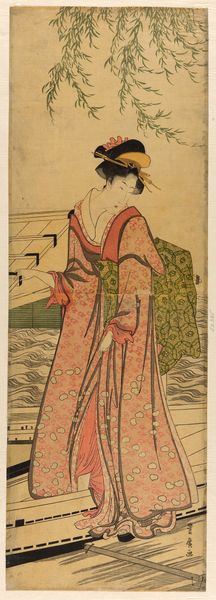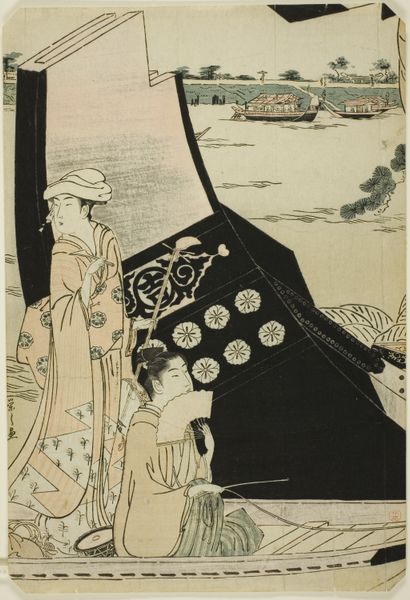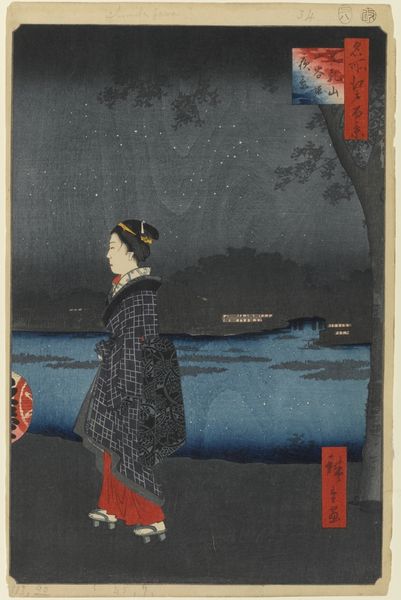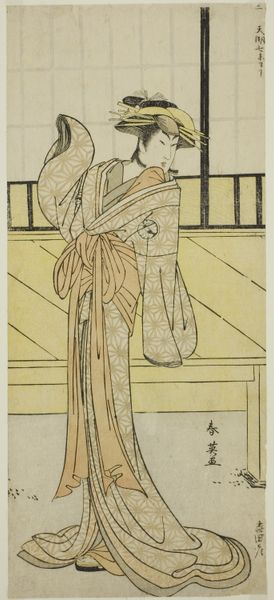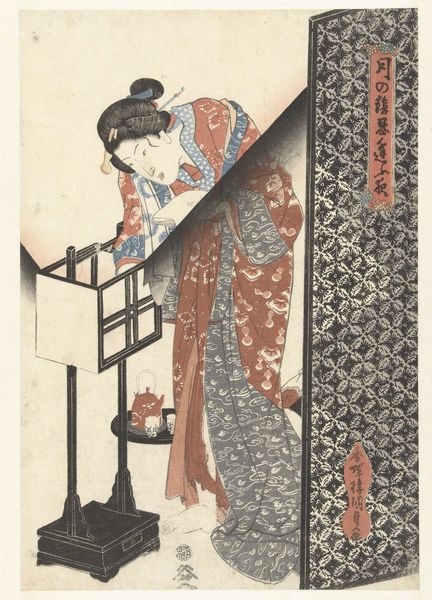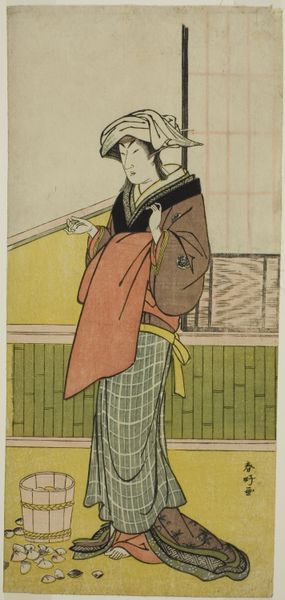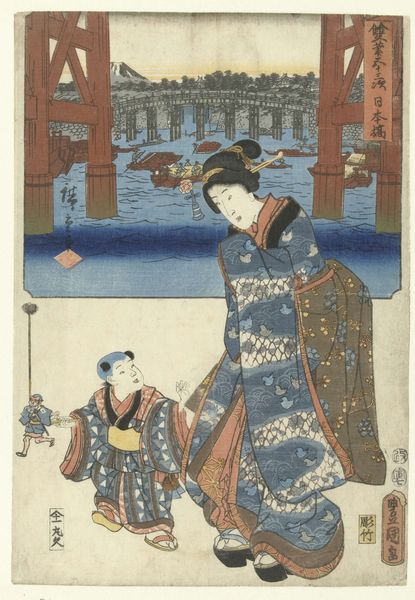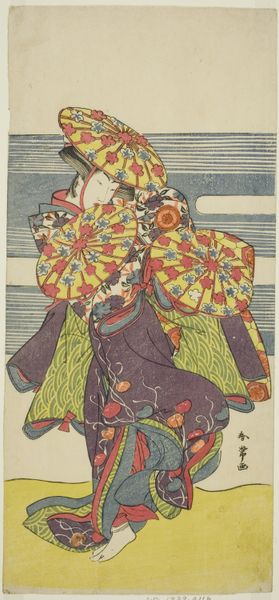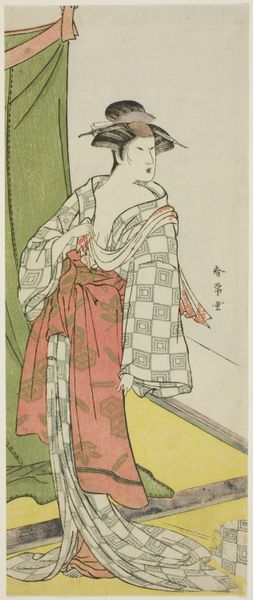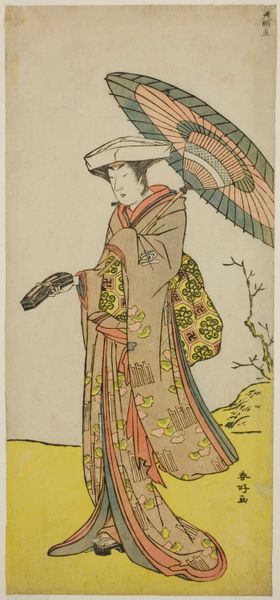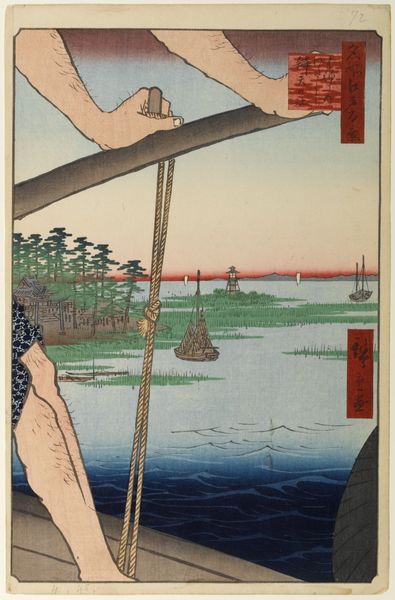
Distant View of Matsuchi Hill from the Sumida River (Sumidagawa yori Matsuchiyama enkei), from the series "One Hundred Views of Musashi Province (Musashi hyakkei no uchi)" 1884
0:00
0:00
Dimensions: 33.9 × 24.3 cm (13 3/8 × 9 9/16 in.)
Copyright: Public Domain
Editor: So, this is “Distant View of Matsuchi Hill from the Sumida River,” a woodblock print made in 1884 by Kobayashi Kiyochika. I find it serene; the colors are soft, but there's something almost voyeuristic about the composition. What do you see in this piece? Curator: The primary focus isn’t necessarily the landscape but the woman. Look closely at the symbols present in her attire. The stylized cranes on her kimono – what might those signify to you? Editor: Well, cranes in Japan often symbolize longevity and good fortune, right? But why place her so prominently between us and the view? Curator: Consider the context. Kiyochika was working during a period of rapid modernization in Japan. This print seems to engage with nostalgia. Her placement acts as a bridge, connecting the viewer to both a traditional aesthetic and the distant, perhaps fading, natural landscape. Her figure acts as a memory we're collectively clinging to. Editor: So, she's not just a woman, but a symbol of a disappearing world? Is the viewer invited to be a participant or observer? Curator: Perhaps both. Ukiyo-e often places the viewer in a liminal space, somewhere between dream and reality. The obscured view, the focus on her patterned clothing, encourages contemplation. Does her partially concealed presence indicate a specific, individualized identity, or is she representative of Japanese women, culture, or beauty? Editor: That's interesting. So, this isn't just a pretty landscape; it's loaded with cultural memory. The artist prompts us to reflect on societal changes and their impact on personal and collective identities. Curator: Precisely. Symbols such as cranes transcend mere decoration, becoming vessels of shared history. Thinking about cultural context helps unpack the depths of their presence.
Comments
No comments
Be the first to comment and join the conversation on the ultimate creative platform.

